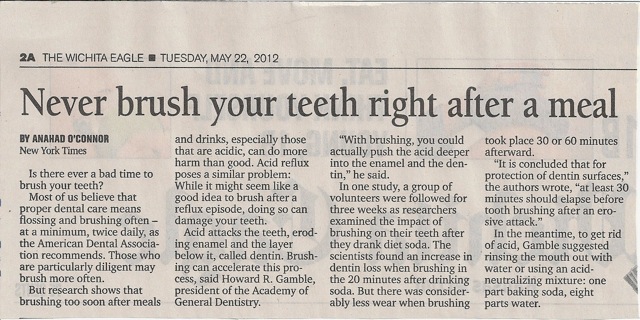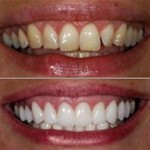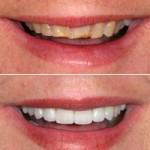December was a crazy month here at the practice and at home so I needed to make a resolution that I post more often. But resolutions are difficult to keep. I find that if I don’t write them down and post them in a conspicuous place, that I don’t keep them very often. I also have found that I can only really count on keeping one or two. But I enjoy posting to our blog, so this one will probably be a little easier to maintain. I know a lot of people out there make a resolution to stay healthy or improve their health. I’m biased, but I think maintaining your dental health or changing your not-so-great dental habits would be a great resolution. So I’ll give you a couple ideas for some dental health resolutions.
1. If you don’t have a dental check-up scheduled, call right now. Pick up your cell phone and call your dental office. Start the new year with a committment to get on a recare schedule (whatever your dentist recommends-every 6, 4, or 3 months). If you already have an appointment, promise yourself to pre-schedule your following recare appointment. People are many times more likely to keep an appointment that they already made than to pick up the phone and call to schedule.
2. Change your drinking habits, especially if you drink sugary liquids. Did you know that if you put an extracted tooth in a glass of Coke that within 1 day the tooth will be dissolved? Between the acid and the sugars, soda is very destructive to teeth. Even more destructive, are the energy drinks that are out there such as Gatorade, Redbull, Monster, etc. They are more acidic and usually have more sugar than sodas. You don’t have to stop drinking soda or energy drinks, but try to not sip all day or drink them right before you brush (see below). I’d rather see a patient gulp down a can of Coke than sit at their desk, sipping on it. At least after a big acid attack, the saliva has a chance to neutralize the mouth instead of a constant flow of acid and sugar sticking to the teeth.
3. Rethink the philosophy of your brushing habits. Research has shown that brushing teeth less than 30 minutes after acidic foods is actually more destructive to the teeth than no brushing at all. This means that if you have a Mountain Dew, eat an orange, or throw up from the flu or partying too much, you should wait until the acid level goes down in your mouth. You can chew some sugarless gum (or gum with xylotol is even better), swish with some baking soda/water mix, or just wait, but don’t brush the enamel because the acid has caused it to be in a weakened state. If you were to time your brushing to be the least destructive, you would brush as soon as you get up in the morning BEFORE eating breakfast and you should brush when you get home from school or work BEFORE you eat. This lowers the amount of bacteria in you mouth that cause cavities and your enamel is not weakened from those acidic foods.
4. Start flossing or improve your flossing technique or buy an Airflosser or WaterPik. Take 1 minute of you day to floss just once. You can floss in the morning or at night, before or after brushing (although before is what’s recommended), and use any type of floss that feels comfortable. See my previous posts for good technique and other tirades about flossing. Also, something that is new to the market, but seems promising, is the Airflosser from Phillips (same people that make the Sonicare). You place the tip, push a button, and it uses a high pressured mist of water directed between the teeth. I’ve been trying one out for the past couple months and it does seem to work. Give me a call if you want more information or want to purchase one because I’m not sure if they are out in the stores yet.
Good luck with whatever resolutions you make. I hope they make you healthier and happier with your lives. And I hope you have a great 2012!




